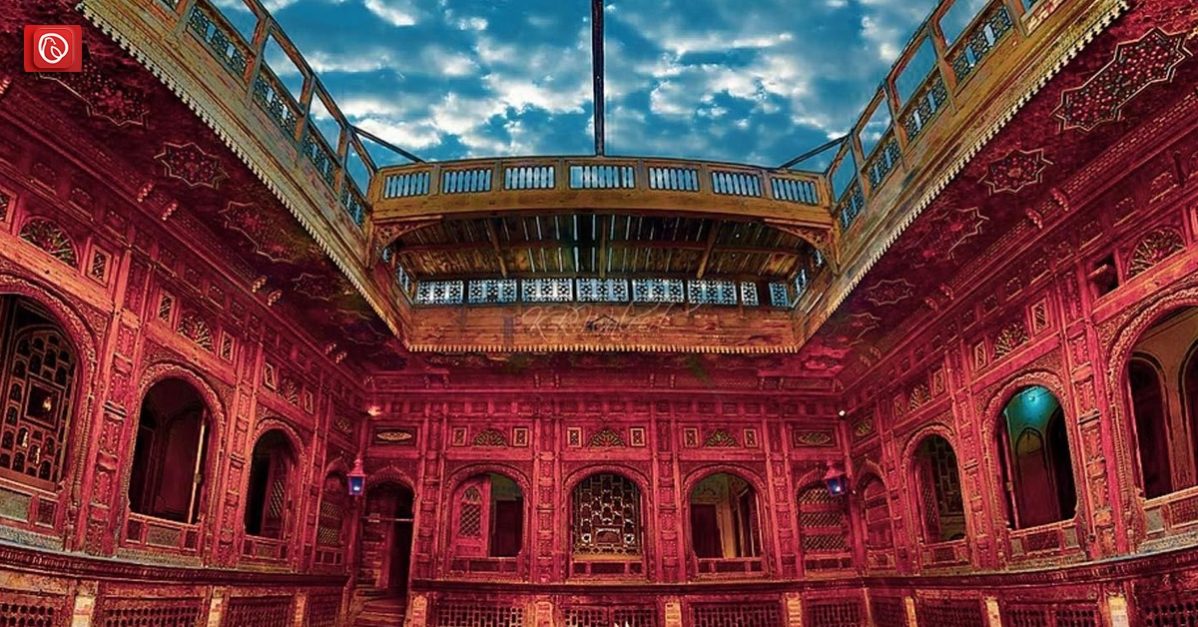
Source: Graana.com
Sethi House Museum is a historic building in Peshawar, Pakistan. It was built in the 19th century by the Sethi family, a wealthy trading family from Punjab doing business with Russia and Central Asia. The house is a beautiful example of Mughal-Central Asian architecture, with intricate wood carvings and colourful glasswork.
The government of Khyber Pakhtunkhwa established the museum in 1990. It houses a collection of artefacts from the region, including paintings, sculptures, carpets, and textiles. The museum also has a library and a research centre. Sethi House Museum is a popular tourist destination in Peshawar. It is a great place to learn about the history and culture of the region.
In this blog, Graana.com has gathered information about the Sethi House Museum.
The Sethi family was a wealthy trading family from Punjab. They came to Peshawar in the 19th century and built several houses in the city. Sethi House was built in the 19th century by Karim Bakhsh Sethi, a member of the Sethi family. The house was built in the Mughal-Central Asian style of architecture. It is a two-storey building with a courtyard in the centre.
In the early 20th century, the Sethi family moved to India. This house served as a government building for the British colonial government and later for the Khyber Pakhtunkhwa government. In 1990, the government of Khyber Pakhtunkhwa decided to turn the house into a museum. The museum was opened to the public in 1991.
Sethi House Museum houses a collection of artefacts from the region. The collection includes paintings, sculptures, carpets, and textiles. The painting collection includes Mughal paintings, Pashto paintings, and a few European paintings. The sculpture collection includes Buddhist sculptures, Gandhara sculptures, and a few Hindu sculptures.
The carpet collection includes tribal carpets, Mughal carpets, and a few Persian carpets. The textile collection includes shawls, dresses, and rugs. The museum also has a library and a research centre. The library has a collection of books on the history and culture of the region. The research centre is used by scholars to study the artefacts in the museum.
The museum has sections; the first one is about the house’s history. This section includes photographs of the house from different periods and information about the Sethi family. The second section is dedicated to the art collection of the museum. This section includes paintings, sculptures, and carpets from the region.
The paintings in this section include Mughal paintings, Pashto paintings, and a few European paintings. The sculptures in this section include Buddhist sculptures, Gandhara sculptures, and a few Hindu sculptures. The carpets in this section include tribal carpets, Mughal carpets, and a few Persian carpets.
The third section is dedicated to the textile collection of the museum. This section includes shawls, dresses, and rugs from the region. Explore a range of exquisite wool and silk shawls, along with traditional pashmina and cotton dresses, as well as intricately patterned wool rugs. These books include academic texts, as well as travel guides and novels.
The museum’s fifth section is solely dedicated to the research centre where scholars study the artefacts. The centre has a collection of books and journals, as well as a computer database.
Sethi House Museum is open from 9 a.m. to 5 p.m., Tuesday to Sunday. The entrance fee is Rs. 100 for adults and Rs. 50 for children. The museum is located in the heart of Peshawar, near the Qissa Khwani Bazaar. It is a short walk from the Peshawar Railway Station.
Sethi House Museum is a fascinating place to learn about the history and culture of Peshawar. The museum is home to a beautiful collection of artefacts and a great place to spend a few hours exploring.
Sethi House Museum is a historic building in Peshawar, Pakistan. The Sethi family, a wealthy trading family from Punjab, built it in the 19th century. The house is a beautiful example of Mughal-Central Asian architecture, with intricate wood carvings and colourful glasswork.
You can visit this historical building throughout the year, but it is best to visit during the daytime when the sun is shining, and the colours of the wood carving and glasswork are most vibrant.
Sethi House Museum is located in the heart of Peshawar, near the Qissa Khwani Bazaar. It is a short walk from the Peshawar Railway Station. You can also take a rickshaw or taxi to the museum.
There are a number of hotels and guesthouses in Peshawar. You can also stay with a local family.
When packing for Sethi House Museum, be sure to pack comfortable shoes for walking around the museum. You may also want to pack a hat and sunscreen if you visit during the summer months.
When visiting this Museum, it is essential to be respectful of the local customs and etiquette. Here are a few things to keep in mind:
Peshawar is a safe city to travel to. However, it is important to be aware of your surroundings and take precautions, as you would in any unfamiliar place.
If you want to know about historical places in Peshawar, follow Graana.com for more information.
National Museum of Pakistan
An Overview of Lok Virsa Heritage Museum, Islamabad
Everything You Need to Know About Taxila Museum
Best Places to Visit in Karachi
Lahore, April 23, 2025 – The city of Lahore has successfully completed the construction of…
ISLAMABAD, Pakistan – April 23, 2025 – Chaaye Khana, Pakistan's popular cafe renowned for its…
ISLAMABAD: Prime Minister Shehbaz Sharif laid the foundation stone for the Murree Road underpass on…
DUBAI: Pakistani real estate developers and representatives showcased a range of commercial and residential investment…
ISLAMABAD: Capital Development Authority (CDA) is currently undertaking a major Rs652 million project to upgrade…
Karachi – Mayor Barrister Murtaza Wahab has announced the launch of a citywide anti-encroachment operation…